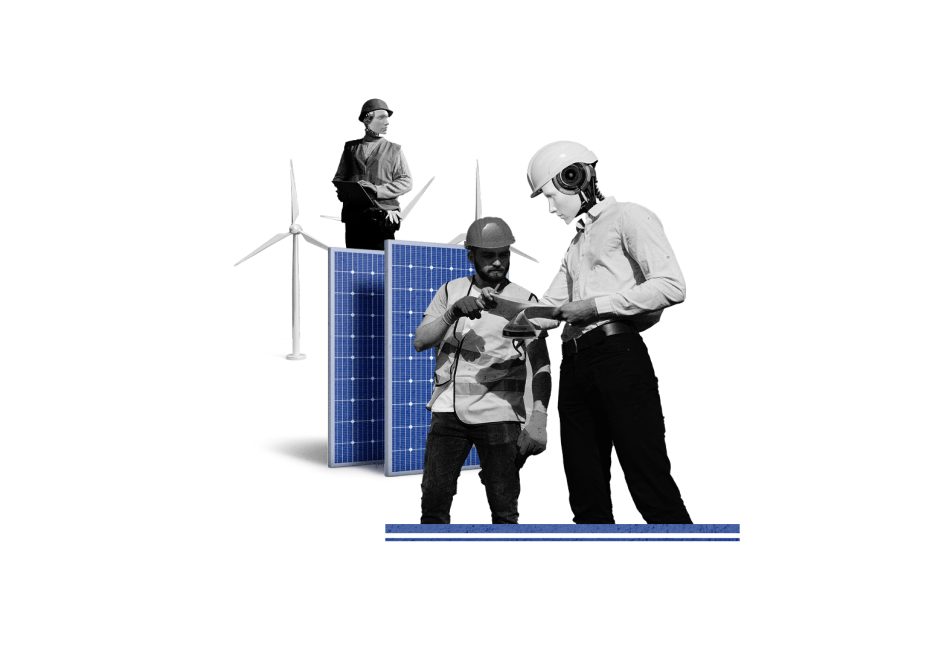Salome Janelidze, member of the board of the Energy Training Center of GNERC, talks about artificial intelligence in the energy sector:
“Artificial intelligence (AI) has been developing extremely fast recently and, for many of us, is becoming a part of our daily lives. The development of AI based on the Large Language Model has changed the job description for many people. According to a study by Goldman Sachs, generative AI will affect 300 million jobs. Furthermore, according to a study conducted by the platform Fishbowl in January 2023, 43% of employees use AI in their professional activities. At the same time, many consider such a rapid spread of AI risky. Last March, more than 1,000 people associated with the field of AI, including Elon Musk, signed a petition calling for a 6-month moratorium on the development of large AI systems until the potential and associated threats are properly investigated.
Energy is one of the sectors where AI can have a transformative impact. It can be used at the stages of energy production, trade, transportation, and consumption. AI has the potential to help solve the challenges facing the sector today: optimizing electricity generation, demand management, sustainability of energy systems, and facilitating the energy transition, including by promoting energy savings and integrating renewable energy into the grid.
Optimization of Electricity Production
One of the important directions for using AI in the energy sector is the optimization of electricity generation. Through AI, it is possible to process a large amount of information related to electricity production: data on meteorological and hydrological conditions; Information about the state of production equipment; the schedule of maintenance work; and the expected level of demand for electricity. Based on the processing of these variables, AI allows manufacturers to optimally plan electricity generation and increase the efficiency of power plants. In addition, by using AI, manufacturers can predict and better plan maintenance work and reduce the downtime of production facilities.
Integration of Renewable Energy Sources with the Electricity Grid
For the energy transition and the replacement of fossil fuels with clean energy, it is necessary to integrate a large number of solar and wind power plants with the electric grid. This is associated with considerable hardship due to the intermittency of the generation of such power plants. AI can facilitate grid integration of renewable energy sources by improving output forecasting and managing variability and overload. As a result, grid reliability can be improved without directly strengthening the physical infrastructure, and system operators will be able to connect more renewable energy producers to the grid.
Energy Trading
AI can also be used to optimize energy trading. By processing and studying the historical data of trading in the market, as well as determining the expected production, consumption, and imbalance, traders can establish the most favorable position in the market. AI also creates new opportunities for prosumers. For electricity consumers who have their own micropower plants as well as electricity storage batteries, AI can determine, taking into account the weather forecast and other factors, whether it is appropriate to store excess electricity and use it later instead of immediately feeding it into the grid. In addition, AI can be used for peer-to-peer electricity trading. It will determine trading strategies for the participants in such trading, which will be implemented and enforced through blockchains.
Resilient Energy Network
The use of AI also has great potential in terms of promoting the management and sustainability of energy networks. System and grid reliability are among the critical prerequisites for the energy transition. Through AI, system performance can be optimized, including by helping to balance supply and demand, managing congestion, and efficiently responding to supply disruptions. In addition, AI makes it possible to detect faults in the infrastructure before they occur and thus help prevent supply interruptions.
Promotion of Energy Efficiency
AI can also be used to promote energy conservation and improve energy efficiency. By connecting smart technologies with smart meters, it is possible to optimize energy consumption and reduce energy costs, for example, by turning on household appliances at a time when the demand for electricity, and therefore the price, is the lowest. In addition, AI can optimize heating and lighting, which will also contribute to the energy transition through energy savings and demand management.
Electric Vehicle Charging Management
By using AI, it is possible to manage the charging of electric vehicles (EVs), which will also contribute to the sustainability of the grid. In particular, with smart chargers using AI, it is possible to optimize the charging schedule, taking into account various factors such as network congestion, electricity prices, and the share of renewable energy in the current energy mix. AI will also facilitate the use of EVs as a means of storing electricity. In such a case, after identifying the need for the system, the EV will supply electricity to the grid.
Related Challenges
Along with the proliferation of AI in the energy sector, there are associated risks to consider. One of them is data protection. Generative AI uses massive amounts of data to learn. It identifies specific logic and, based on this, creates original content. Data processed by AI may include sensitive information such as personal data or trade secrets. Therefore, it is necessary to protect such information through relevant regulations. In addition, AI can be used for cybercrime as well. It is necessary to strengthen cyber security at the stages of energy production, trade, and transportation, as well as at the stage of consumption.
The use of AI in the energy sector is still in its early stages, but a sharp increase in its use is expected in the near future. In order to properly manage the related challenges, the development of an appropriate regulatory framework should become a concomitant process of the large-scale introduction of AI.” S










